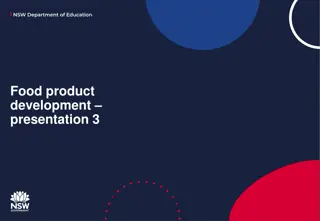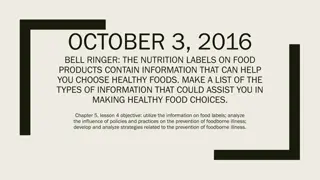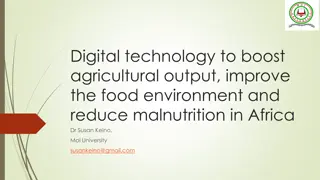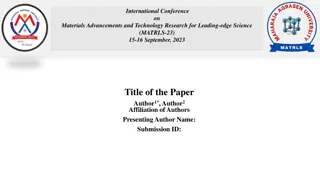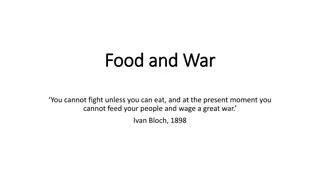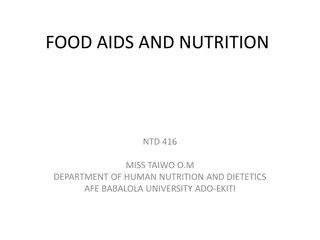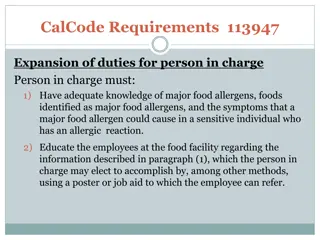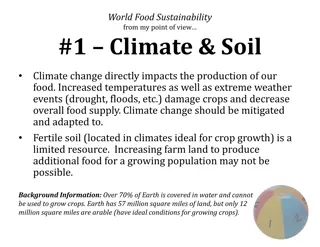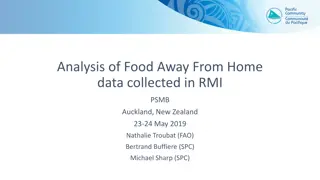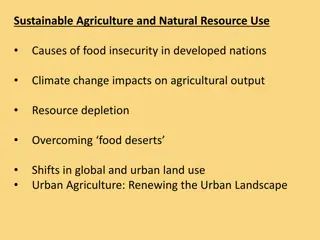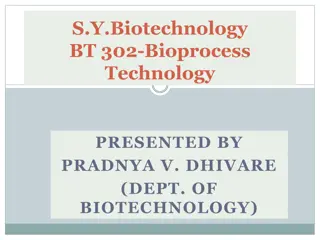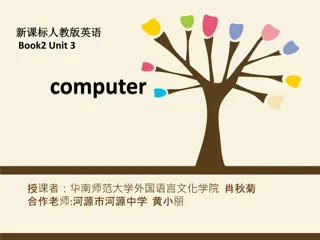Advancements in 3D Printed Food Technology
Explore the innovative world of 3D printed food technology with the NSW Department of Education. Discover how this emerging technology revolutionizes food preparation, benefits the environment, and addresses challenges in the food industry. Learn about the process of 3D food printing, types of ingredients used, advantages, and considerations. Uncover the potential of 3D printed food in providing nutritious options, reducing environmental impact, and catering to special dietary needs.
Download Presentation

Please find below an Image/Link to download the presentation.
The content on the website is provided AS IS for your information and personal use only. It may not be sold, licensed, or shared on other websites without obtaining consent from the author. Download presentation by click this link. If you encounter any issues during the download, it is possible that the publisher has removed the file from their server.
E N D
Presentation Transcript
NSW Department of Education Food product development presentation 2 Emerging technologies in the food industry
NSW Department of Education 3D printed food
NSW Department of Education What is 3D printed Food? 3D printed food is an automated way of preparing foods and meals. 3D food printing offers a range of potential benefits. It can be healthy and beneficial for the environment. For example it can help to convert alternative ingredients such as proteins from algae or insects into recognisable food products.
NSW Department of Education How does a 3D printer work? 3D food printers can print food, usually through one more syringes. Three-dimensional printing of food works in a similar way to a regular 3D printer. Using a software program, the food design is printed. The ingredients must be pur ed to have the right viscosity. The puree is then inserted into syringe-like containers. The food product is then printed when the purees are extruded through a print nozzle onto a surface.
NSW Department of Education Types of ingredients used in 3D printed food fruits and vegetables doughs and batters wheat and grains proteins- such as proteins sourced from insects sauces dairy products desserts and sweets algae.
NSW Department of Education 3D printed foods advantages a 3D printed food can be made more nutritious by adding nutrient rich ingredients to recipes such as protein from ground insects and algae a great deal of stress is put on the environment by traditional food production, the use of insects and algae reduces the impact on the environment 3D printing technology is helping seniors who have difficulties eating hard vegetables German food innovation company Biozoon are developing special recipes for seniors using 3D food printers to create food that is softer to chew.
NSW Department of Education 3D printed food - disadvantages difficulty imitating texture of foods creating dishes that are presentable creating great taste food printing is slow purchasing specialised food 3D printers is costly although the food is safe to eat, there is a small concern with keeping the 3D printer clean and safe for food preparation.
NSW Department of Education The food product development process
NSW Department of Education Key to new product innovation success A company or products survival is dependent on the ability to innovate better and faster than the competition. This includes: reducing product development cycle time increasing product development innovation reusing company knowledge and assets.
NSW Department of Education Steps in food product development process 1. Brief 2. market research 3. design specification 4. shortlisting and testing 5. manufacturing specification 6. quality control.
NSW Department of Education Brief Brief: is the problem that needs to be solved. For example developing a gluten free lasagne for people with celiac disease.
NSW Department of Education Market research Market research: finding out information about what people want from a product. It includes: researching or studying market trends and shopping habits conducting surveys, questionnaires and interviews. for example, would people buy a gluten free lasagne?
NSW Department of Education Design specification The design specification is listing the needs of the product. It includes: size shape shelf life weight sensory characteristics including texture, taste, smell, appearance costs ingredients (with quantities) equipment.
NSW Department of Education Shortlisting and testing Shortlisting Shortlisting is where initial ideas are generated following the design specification. These ideas are then screened or chosen on which ideas best meet the design specification. Testing The results are analysed so that the product can be improved or changed according to taste, texture, smell, appearance. This is referred to as sensory analysis. Similar products are tested for a specific characteristic example sweetness. Samples are given coded names and testers sort the products from the most to the least sweetest. Products are tested for a specific characteristic to find out if there is a noticeable difference between two products. For example, manufacturers can test a new gluten free version of a product to see if it is similar to the original.
NSW Department of Education Manufacturing specification The manufacturing specification lists information a manufacturer needs to produce or make the product. The specification records the stages of the production process, with details of all the characteristics such as the shape, size, texture, colour and flavour required in the final product.
NSW Department of Education Quality control Quality assurance (QA) guarantees that food and food products meet a clear and consistent set of standards. At key stages in production there should be quality control checks which alerts manufacturers to any problems. The results of these checks are recorded. Checks can be done by hand or by computer. Quality control checks will include: weight checks to make sure the product is the required weight visual checks to ensure it looks the way it should temperature checks to make sure it is being kept at an appropriate temperature pH checks to ensure the food has the correct acidity/alkalinity microbiological checks to ensure bacteria are not at harmful levels chemical checks to safe guard against chemical contamination.
NSW Department of Education Quality checks Other quality checks include: microbiological checks to ensure bacteria are not at harmful levels chemical checks to safe guard against chemical contamination metal checks to safe guard against contamination by metals that could occur at the packing stage organoleptic checks to check flavour, texture and aroma by sampling the food product.
NSW Department of Education Functions of food packaging
NSW Department of Education Functions of food packaging The three main functions of food packaging are: to contain o types of packaging suitable (factory,retail,home level) o types of packaging (plastic or cardboard). to preserve o shelf life o food stuff integrity o micro/chemical stability. to inform or persuade o Logo or picture o nutritional information o instructions such as use in cooking.

















